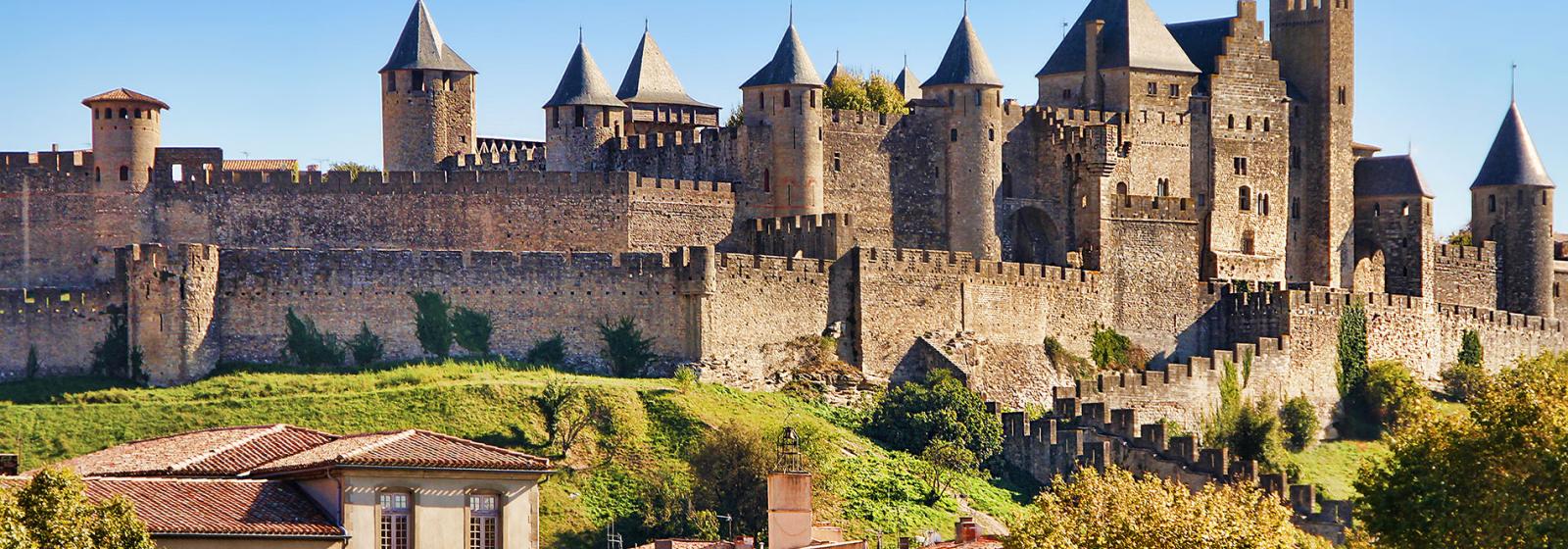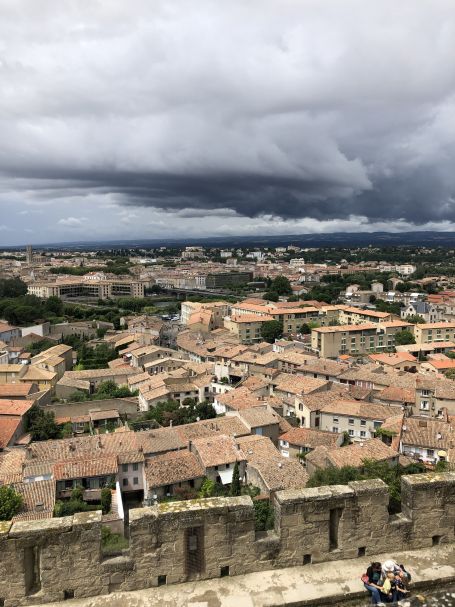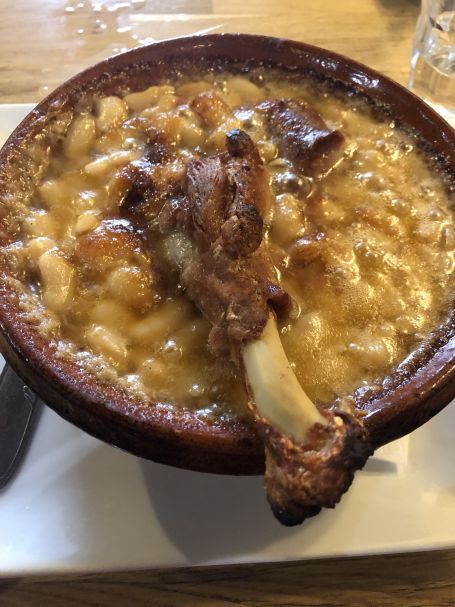Carcassonne Posted by Bridgette on Jul 16, 2020 in Culture
Coucou tout le monde! Hi there everyone!
I hope you all had a wonderful Fête Nationale! This was the first time in the past 5 years that I was not in France for le 14 juillet, and although I was sad about my canceled travel plans, I have been reflecting on just how lucky I have been to always spend my summer in France.
I thought we could take un voyage virtuel, a virtual trip, together. Allons-y a Carcassonne, let’s go to Carcassonne!
Carcassonne is a medieval fortified city located about an hour and twenty minutes from Toulouse in the region of Occitanie. It dates back to the Gallo-Roman period and was restored in 1853 by architect Eugène Viollet-le-Duc. It is now mainly a tourist site, but during medieval times it was a blossoming city, able to successfully defend against sieges and attacks by countless enemies. In 1997, it was also dubbed a UNESCO world heritage site.
The fortified city has two outer walls with over 50 towers that were built to protect the city from attacks. The wooden ramparts that overhang provided protection to defenders on the wall and allowed them to shoot arrows or drop projectiles on attackers beneath. In 1849, the French government decided that the city should be demolished because it had fallen into such poor conditions which caused an outcry amongst the citizens, which is when Eugène Viollet-le-Duc was chosen to restore it.
Historically, the language spoken in Carcassonne and throughout the region of Occitanie (formally Languedoc-Roussilon) was not French, but Occitan. In Toulouse and in other parts of Occitanie there has been an attempt at a revival of the original Romance language. There are some schools who teach the language, as well as community events and cafes catering specifically to the Occitan culture and language. You will see dual street signs in both languages, as well as all the metro stops being announced in both languages. Check out the video below to hear it:
If you visit Carcassonne to walk the 1.9 miles of the two outer walls, I would also suggest stopping to eat a bowl of cassoulet, which the cities of Carcassonne, Toulouse, and Castelnaudary are known for. Historically it is a peasants dish, with slow-cooked haricots blancs (white beans), couennes (pork skin), confit de canard (duck confit), and saucisse (sausage).
You may recognize the name of the city from the famous poem by Gustave Nadaud about a man who dreamed of seeing Carcassonne before he died:
Je me fais vieux, j’ai soixante ans,
J’ai travaillé toute ma vie,
Sans avoir, durant tout ce temps.
Pu satisfaire mon envie.
Je vois bien qu’il n’est ici-bas
De bonheur complet pour personne.
Mon vœu ne s’accomplira pas:
Je n’ai jamais vu Carcassonne!
I’m growing old, I’ve sixty years;
I’ve labored all my life in vain:
In all that time of hopes and fears
I’ve failed my dearest wish to gain.
I see full well that here below
Bliss unalloyed there is for none.
My prayer will ne’er fulfilment know
I never have seen Carcassonne!
I hope that your own wish to see Carcassonne will one day be fulfilled, as soon as we are all able to travel to France once again! À la prochaine!

Build vocabulary, practice pronunciation, and more with Transparent Language Online. Available anytime, anywhere, on any device.







Comments:
Jill:
Great post! I have a question about the walls at Carcassonne. They have concentric circles on some of them. Do you know why or where I can find more information? Thanks!
Bridgette:
@Jill Hi Jill! Are you referring to the yellow concentric circles that an artist added in 2018 to celebrate the 20th anniversary as a UNESCO world heritage site? It wasn’t well received by the residents, that’s for sure. https://theculturetrip.com/europe/france/articles/why-the-medieval-city-of-carcassonne-in-france-has-been-covered-in-yellow-circles/